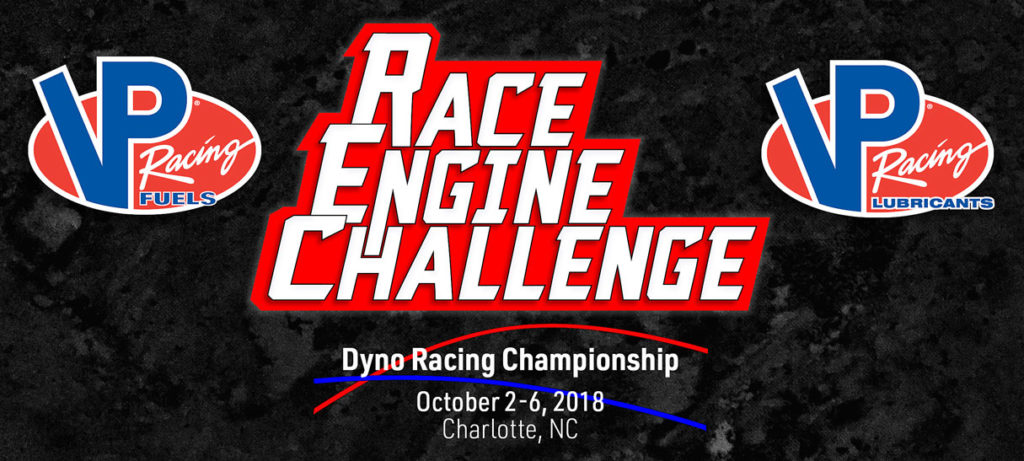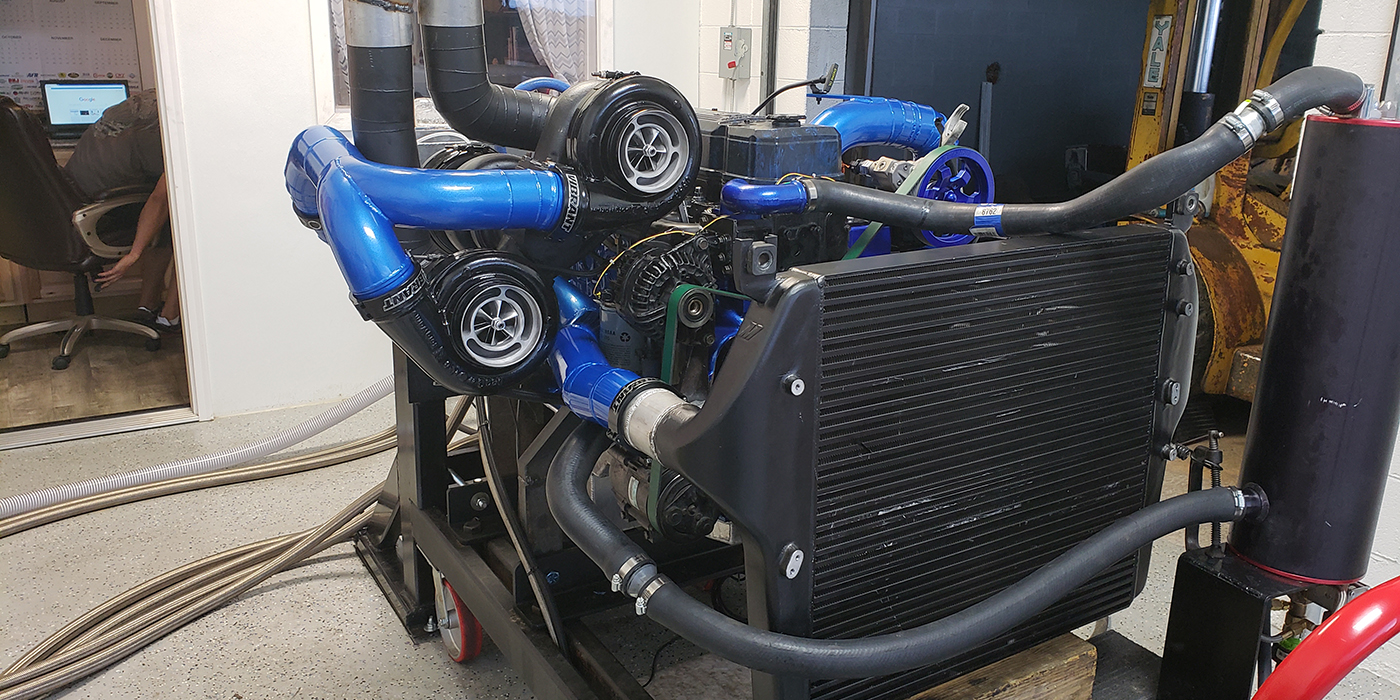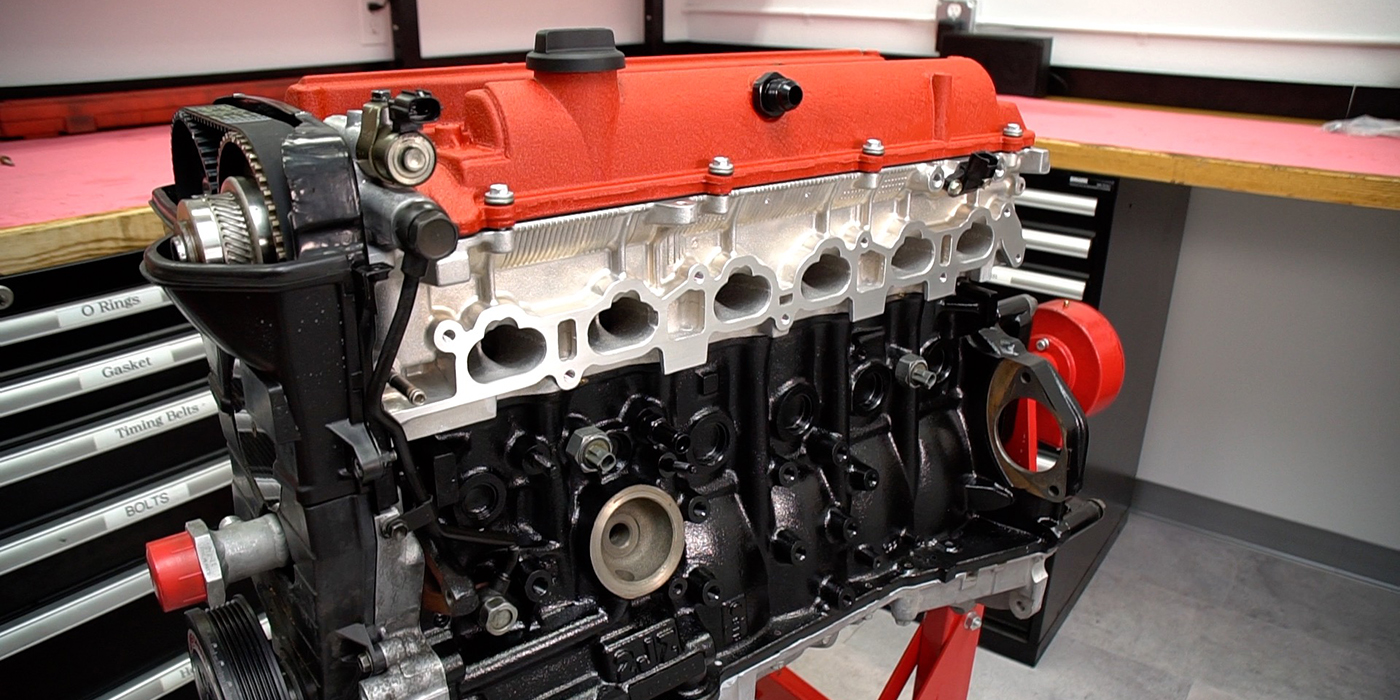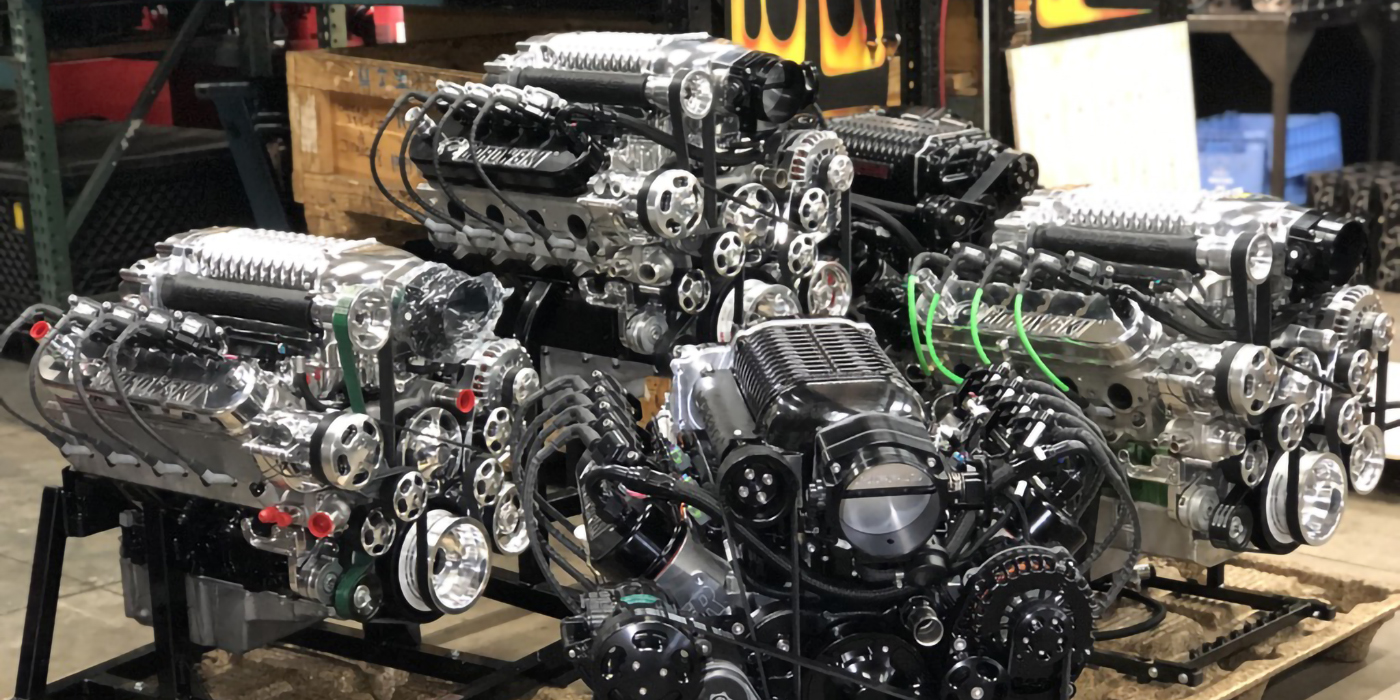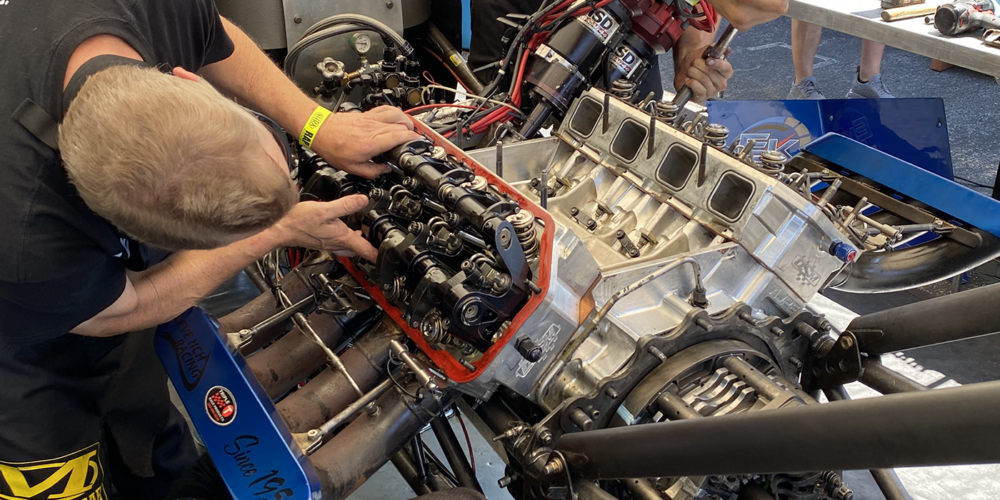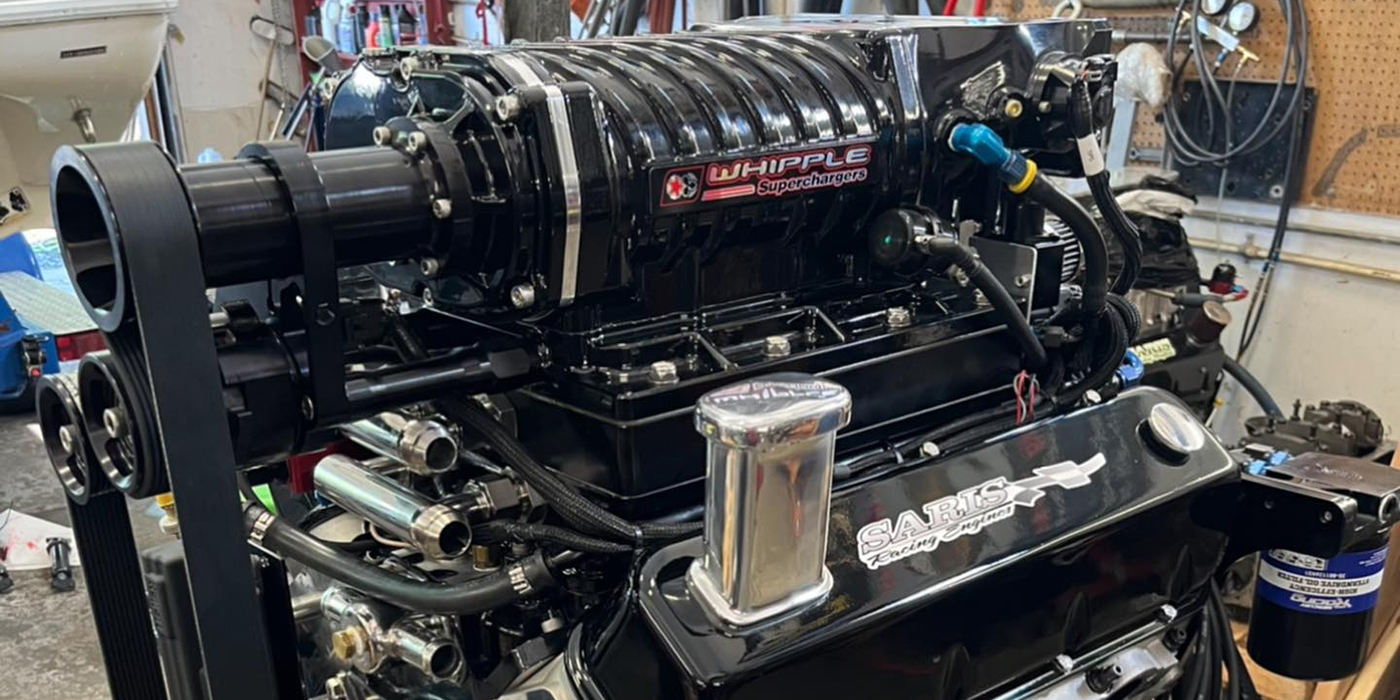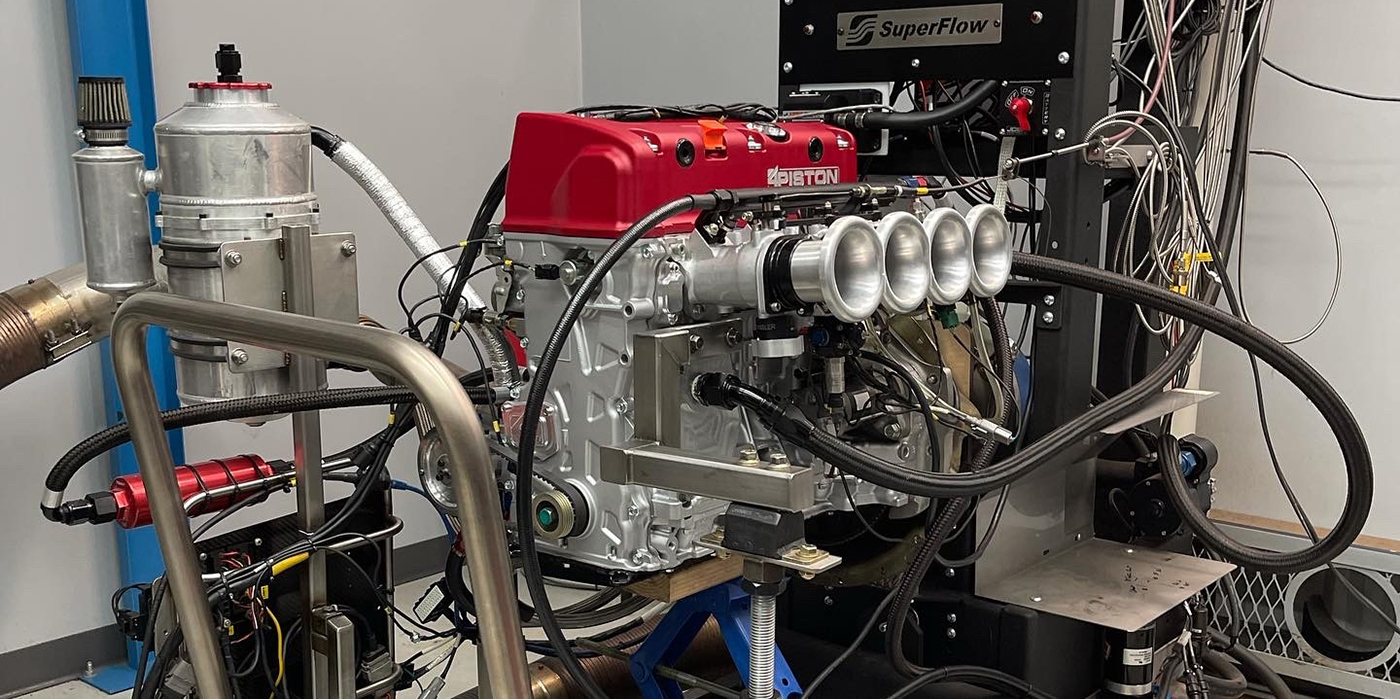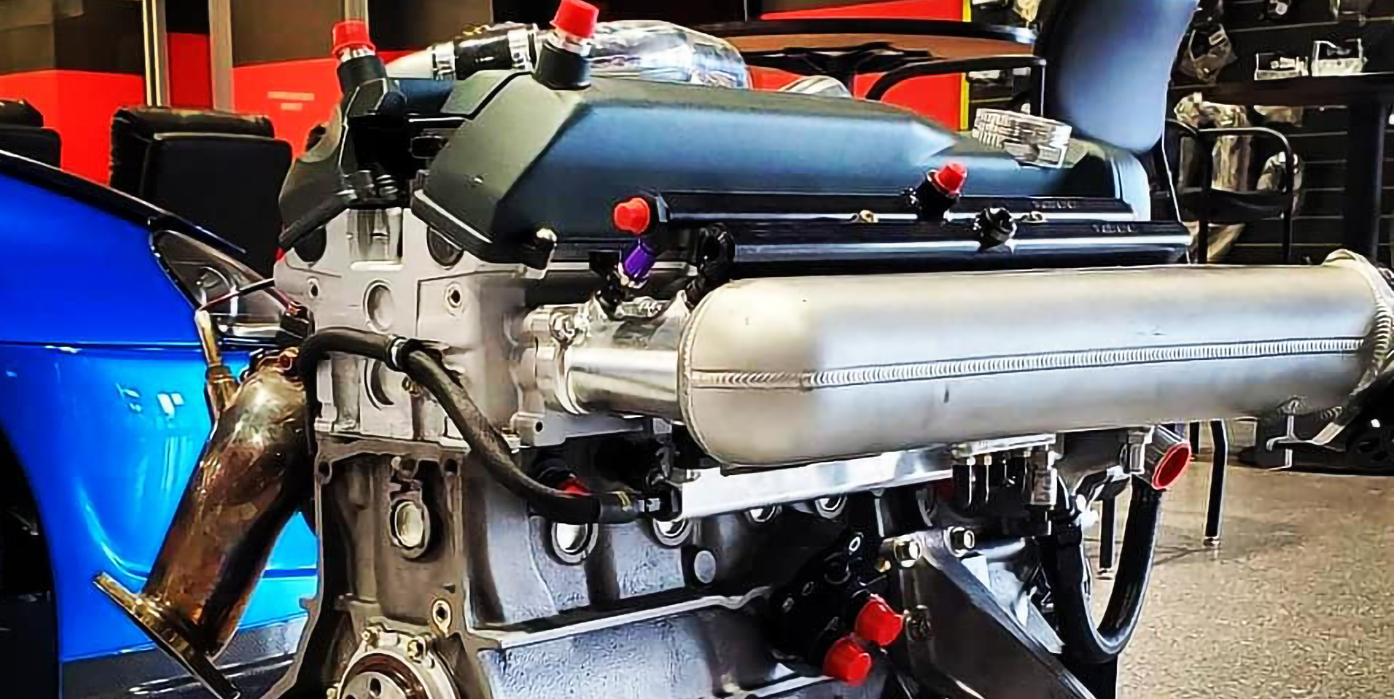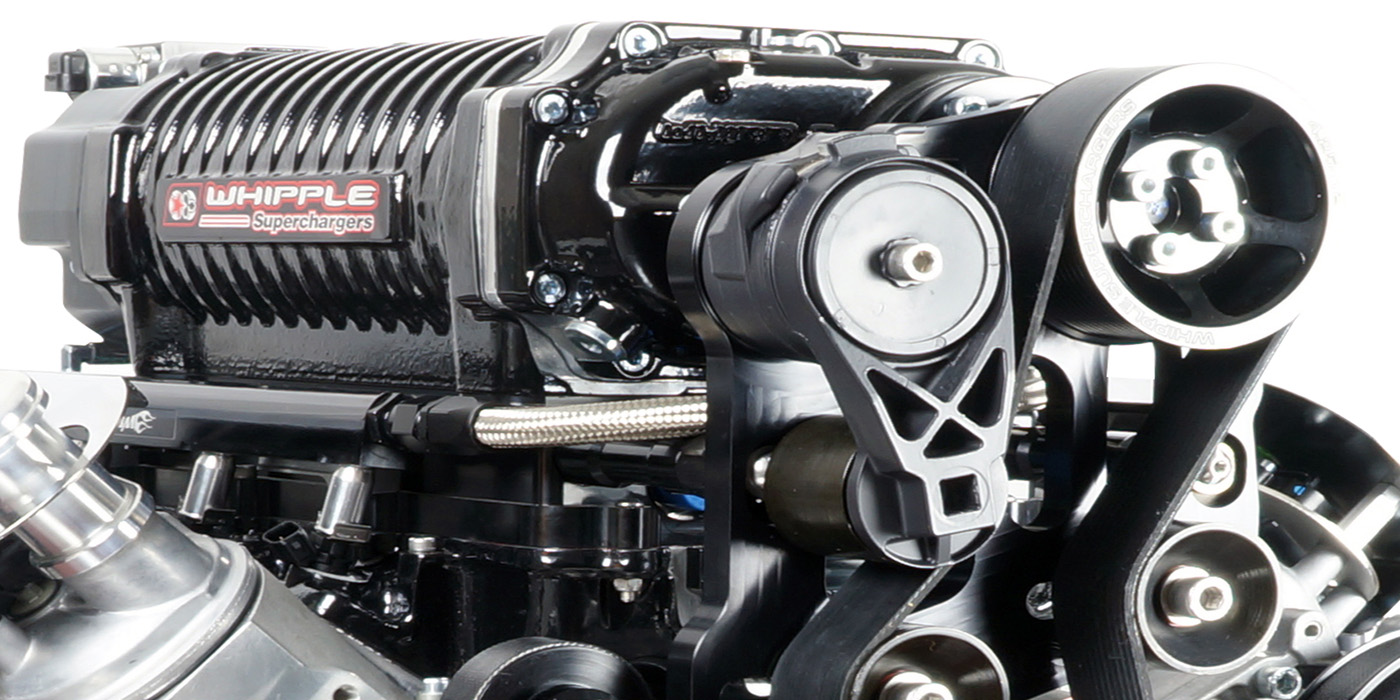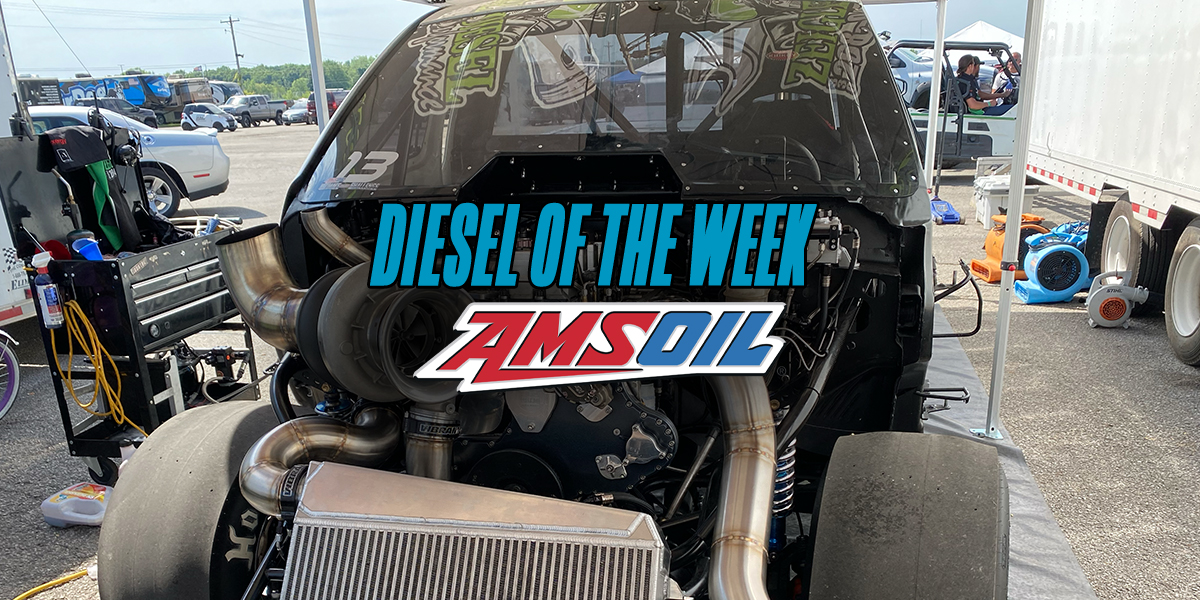Think you have what it takes to top Greg Brown of Hammerhead Performance Engines from Snellville, GA, and his 393 Ford Hemi engine in the 2019 Race Engine Challenge? Good luck – you’ll need to bring your A-game.
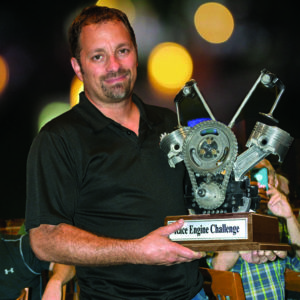
best overall performance with his hemi head “small block” Ford.
Brown, winner of the of the inaugural Race Engine Challenge is selling his winning engine (the 2018 entry made 622 lb. ft. of torque and 772 peak hp) with the intent of creating a new build for the 2019 comptition.
Brown, like all of the 16 competitors invited to participate in the 2019 Race Engine Challenge in Charlotte September 16-20, will have to pay close attention to the rules. Competition is fierce and justice is swift when violations are found.
In a press conference during the 2018 PRI Show, Race Engine Challenge director Greg Finnican unveiled the 2019 rules package and event schedule. More refinement than anything, the 2019 rules are very similar to last years. The intent is to make the competition fair for all participants, whether they are competing in the “Canted/Hemi/Non-Linear” or the “Inline Valve” head categories.
2019 Technical Rules
This contest WILL use a cubic inch divider in scoring to compensate for varied engine displacement. Scored test rpm range is 4,000-7,500 rpm at 300 rpms/second. Dyno correction factor will be SAE J607. Scores will be determined by averaging three of the best average hp dyno pulls out of up to the 10 pulls permitted. The sum of the average corrected hp quotient is multiplied by 1,000 and then divided by the claimed cubic inches.
100 – Engine
Must be a normally aspirated, OEM domestic architecture, cam-in-block, passenger car V8 engine. Power adders prohibited. Any method of artificially heating and/or cooling engine fluids, fuel and/or air prohibited (not to include thermal or friction coatings). This includes, but is not limited to, heating and cooling by mechanical device such as an external cooler or radiator/heater exchanger, pre-heating or cooling of any fluids with an oil heater or fuel heater/cooler, or the addition of a temperature-altering device designed to cool or heat the incoming air charge by mechanical means such as an intercooler, chemical means, or electrical means such as an electric oil heater inside or outside the engine. Aftermarket SFI spec 18.1 harmonic balancer is mandatory.
101 – Displacement
Engines must be at least 370 cid to a max of 510 cid. Cubic inch displacement is calculated by bore x bore x stroke x 6.2832. Cubic inches are calculated to one decimal place, i.e. 450.0. Any part of a cubic inch is rounded up to the next highest inch, i.e. 401.2 = 402, for the purpose of scoring. The cubic inch used in scoring will be a whole number; no decimal part will be used.
102 – Engine Block
Any domestic OEM passenger car or commercially available aftermarket OEM replacement, cast iron or aluminum block permitted. Engine block must retain OEM cylinder bore spacing, block angle and stock lifter bore spacing. Raised deck and raised cam blocks permitted. LS/SBC hybrid blocks permitted.
103 – Crankshaft
Any commercially available crankshaft permitted.
104 – Cylinder Head
Your cylinder head choice determines your category for competition. Send in a question if you’re not sure which category your heads could fall in.
*Canted/Hemi
Any cast two-valve aftermarket or OEM head permitted. No billet heads permitted. Any valves permitted. No welding/epoxy on the exterior of the heads except welding/epoxy repairing for pushrod clearance and welding on the heads to be able to tap threads to secure an intake manifold. Spark plug and valve guides must remain in their original-as-cast location. Valve angle does not have to match original OEM angle for its family of engine. Welding/epoxy within ports permitted. Ports must remain in their original-as-cast and manufactured location. Push rod tubes permitted. From the bottom/deck of the head to the bottom of the port is limited to 2˝. Due to its different architecture, the GEN III Hemi is limited to 2.300˝. Up to .100˝ offset dowel pins permitted. No cylinder head deck plates permitted.
†Inline Valve/Non-Canted
Inline valves (e.g. LS engines) and OEM intake/exhaust two-valve architecture. Valves do not have to match OEM angle. All other rules from the previous paragraph apply and all other engine rules are the same. Inline heads that have more than 2.000˝ from the deck to the bottom of the intake port are in the canted /hemi category.
105 – Ignition
Unlimited. ECU and ignition components may be mounted either on the front or a plate attached to the flywheel side of the engine block and/or back of heads/intake manifold.
106 – Carburetion
Unlimited. Water or any other auxiliary fluid injection systems prohibited. Must be equipped with a single point rearward-pull mechanical throttle linkage compatible with the dyno actuation linkage. A bracket providing an anchor point for the dyno throttle cable and a compatible linkage ball is required at the pull point. A diagram detailing the requirement will be provided to all accepted REC participants.
All engines will utilize an electric fuel pump and regulator and supply line filter supplied by the dyno facility and each engine builder utilizing a carburetor will determine the fuel pressure. Both single and dual feed applications will be given one type 8 AN connection fuel line.
107 – Fuel Injection
Unlimited. 65 psi maximum supplied fuel pressure at dyno gauge. Water or any other auxiliary fluid injection systems prohibited. All italicized portions of Rule 106 also apply.
Fuel pressure regulation will be provided by a system consisting of an electric fuel pump, regulator and supply line filter as part of the dyno fuel system. Fuel pressure will be set at 65 PSI maximum on the dyno fuel pressure gauge. Fuel pressure will be set prior engine start up (engine off). This is a Supply and Return system. A single -8 AN fitting will be required for fuel hook-up to the fuel rails. A single -8 AN fitted and return fuel line will be supplied to fuel tank.
108 – Air Supply
Provided by a plenum in the ceiling with air coming in at a 45-degree angle.
109 – Air Filter
Not permitted. Structures such as ram tubes, velocity stacks, etc. attached to the inlet portion of the carburetor/fuel injection are permitted. Velocity stacks, ram tubes or other devices attached to the throttle body/carburetor limited to 6˝ maximum.
110 – Camshaft & Camshaft Drive
Unlimited.
111 – Camshaft Drive
Unlimited.
112 – Lifters
Any lifter type permitted. .905˝ diameter limit. Lifter bushing permitted.
113 – Zero Lash Valve Lift Limit
.775˝
114 – Camshaft Journal Diameter
Maximum of 55 mm. GEN III Hemi can run their original journal size.
115 – Idle
Engine must be able to idle under 1,100 rpm.
116 – Intake Manifold
The use of spacer/adapter plates for intake to head attachment permitted. Welding or epoxy on interior/exterior permitted. An intake from another family of engines can be used. Eight stack†, tunnel ram, cross ram and sheet metal permitted.
From the top of the china wall to the top of the intake manifold including carb or throttle body spacer is limited to 12.5˝, not including the carb/TB. With forward facing throttle bodies on fuel-injected engines, the limit to the top of the plenum is also limited to 12.5˝. Unlimited carb/TB spacer as long as the total height when using a carb/TB spacer is no more than 12.5˝.
With GEN III Hemis a line will be drawn between cylinder heads to represent a china wall. The width of the manifold is limited to a horizontal line drawn between a vertical line drawn from the two outer edges of the cylinder head’s outer edges of the valve cover surface.
Front-facing throttle body manifolds are limited to 5˝ from the face of the block to the outermost portion of the manifold without the throttle body. No variable runner length mechanism permitted.
†Subject to the 12.5˝ rule from the point of air entry.
117 – Connecting Rods
Any connecting rod permitted.
118 – Pistons & Rings
No smaller than .9m, .9mm, .2mm. Lateral and vertical gas ports permitted.
119 – Compression Ratio
Limited to 12.0:1
120 – Fuel
VP Racing Fuel’s MS109 will be used.
121 – Rocker Arms
Unlimited.
122 – Headers
Chassis-style exhaust headers that run down and back from the front of the engine required. Port matching of the header flange permitted. Any diameter primary tubes and collectors permitted. Headers and slip-on style collectors are acceptable.
Crankcase ventilation systems that vent to any component of the exhaust system are permitted. Bungs for Lambda 02 sensors are permitted. Thermal header wraps (such as Kevlar fabric) not permitted. Adapter plates between cylinder head and header permitted. A minimum of 21˝ between collectors. Exhaust “port plates” permitted.
123 – Oil Pan/Scraper
Oil pan does not need to be commercially available. Pan must measure no deeper than 12˝ from the crank centerline. Pan restricted to maximum of 2˝ wider on one side than widest portion of pan rail. Sump configuration may be front, center or rear. Sump must be maximum of 10˝ long and 6˝ minimum front to back, and have at least a 3˝ differential from the lowest section of the pan to the balance of the pan. Dual sump pans that have a sump in the front and rear (e.g. ’79-’93 Mustang pans) must also have a 3˝ differential between the two sumps and the center section. Dry sump systems and vacuum pumps prohibited. Oil pumps with scavenging stages or used in conjunction with external tanks prohibited. Oil system accumulators prohibited. External belt driven single stage oil pumps permitted. Electrically powered oil pumps prohibited. Temp sensor will be attached to the surface of the oil filter.
124 – Oil
All engines must be shipped “dry.” Engine will be required to use at least 5 quarts of oil. Participants will use only the oil supplied for the competition. Competitors will have their choice of viscosity. No oil additives permitted.
126 – Water Pump
Belt-driven mechanical water pumps or electrical water pumps permitted. Use of cooling system thermostat prohibited. Water pump must be mounted in the OEM location.
Water out of the block in the front of the engine can be modified as long as it is to a single point that can be attached to the dyno cooling system. Optional hookup ways/dimensions to attach will be provided to competitors before the contest. Water lines from the back of the manifold to the front permitted.
127 – Electrical Connections
Contestants will be supplied three (3) 12-volt 20 AMP and three (3) negative connections.
128 – Starter
Dyno will provide the starter.
129 – Flywheel/Flexplate
Any commercially available, unmodified SFI-certified domestic manual steel transmission flywheel is mandatory. Flexplates are prohibited.
130 – Coatings
Any commercially available performance coating is permitted.
Dates & Deadlines
There will be 16 engines in the competition – four engines run each day.
Participant selections will be announced February 1; Entry Fees and Rules Acceptance due March 1; Publication of Dyno Run Schedule July 1; Team Information Sheet Due August 1.
These rules are accurate as of the printing date of this issue. For the most up-to-date rules, visit www.RaceEngineChallenge.com. ν

